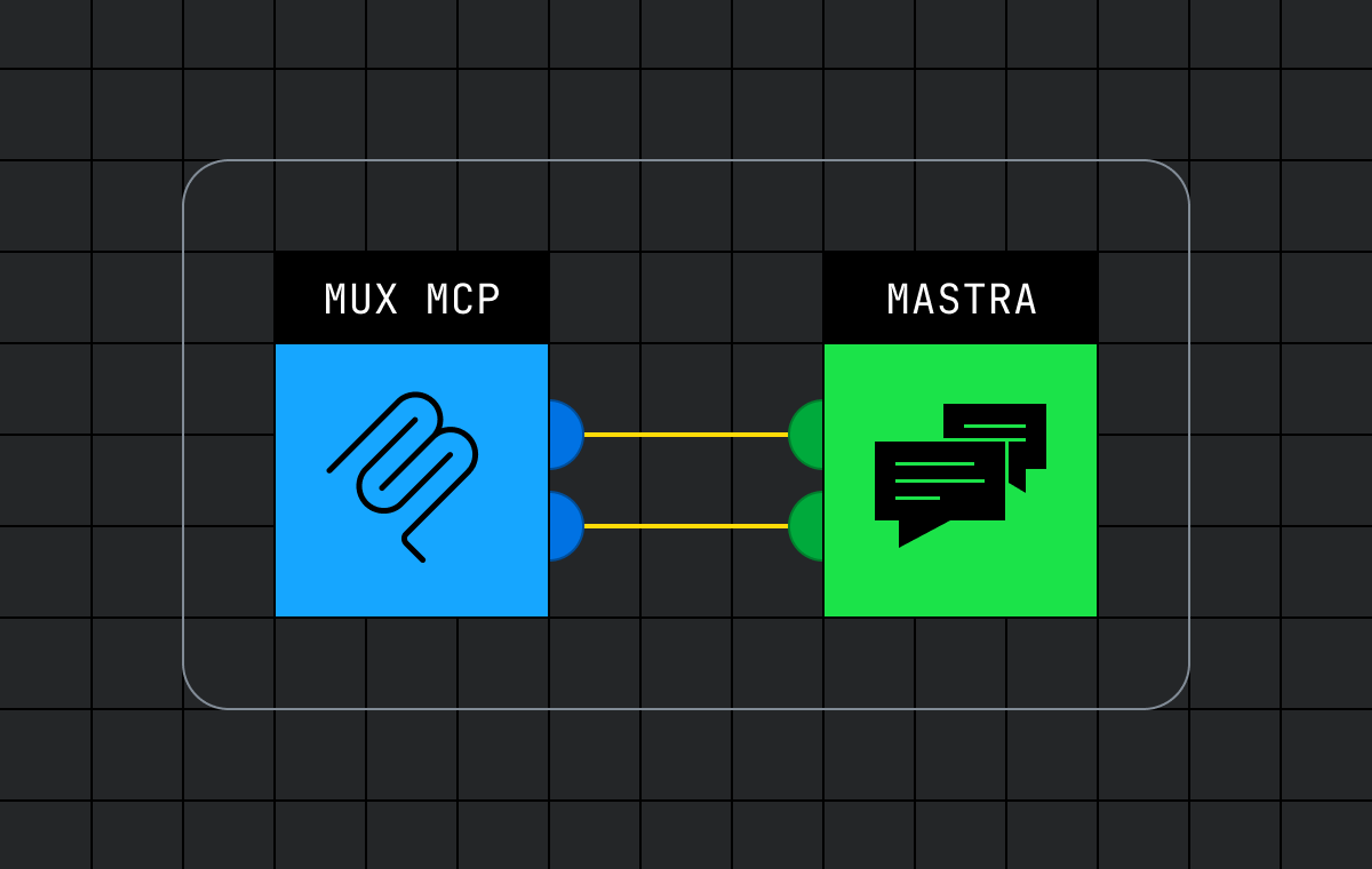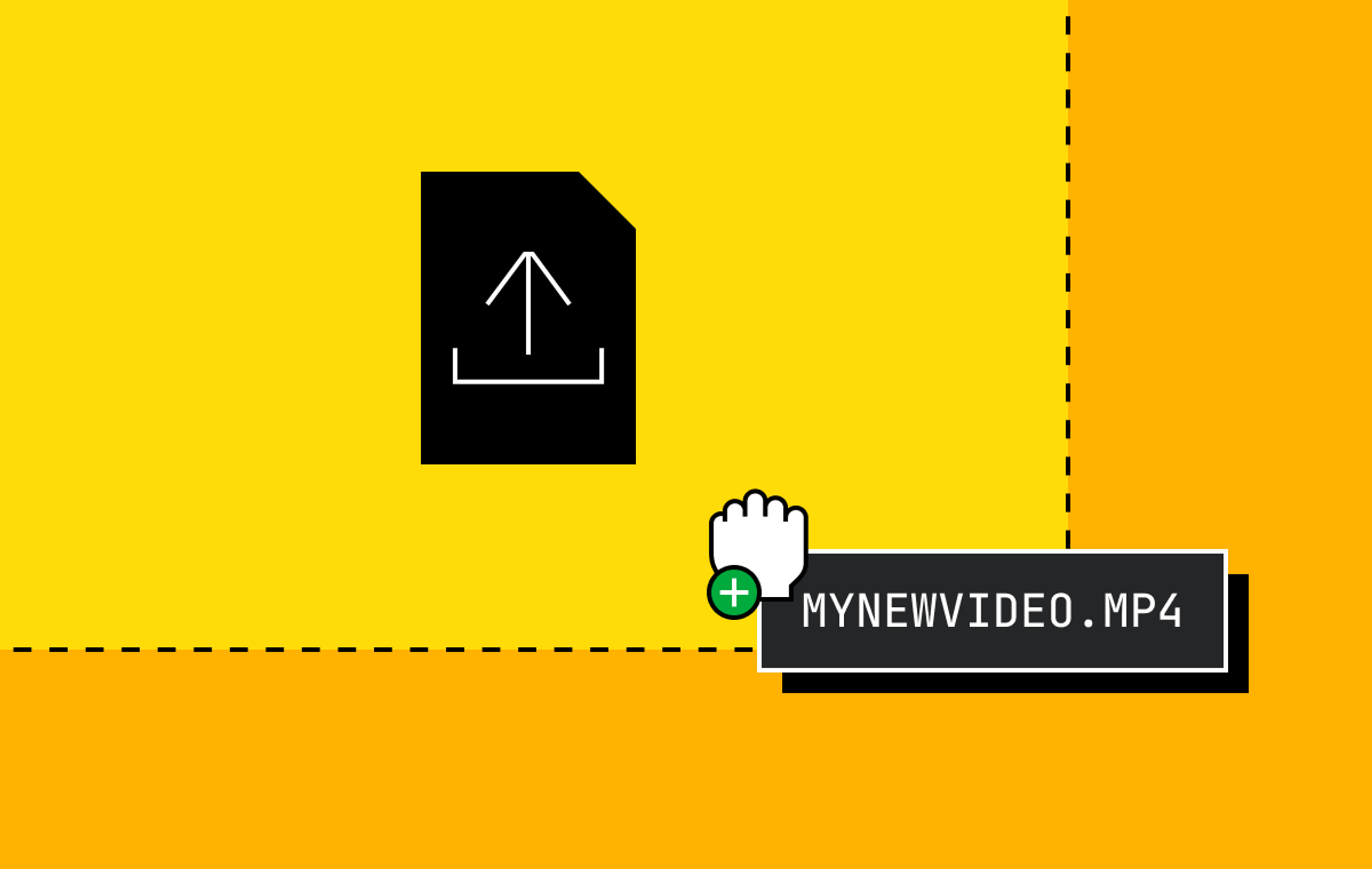We have some good news! Mux users can now easily interact with our API via our officially supported Postman collection. By forking our collection via the “Run in Postman” button in docs and adding the forked collection to your Postman workspace, you get the following benefits:
- There’s no need to make manual API requests or repeat requests for multiple team members.
- The forked collection stays up to date with Mux’s API as changes are made.
- Requests are organized by category (e.g., live streams, assets, direct uploads).
- The collection is easily shareable.
Forking the collection
First, you need to briefly navigate away to click an orange button in our docs that says “Run in Postman.” Clicking this button will trigger the user flow to fork a Postman collection.
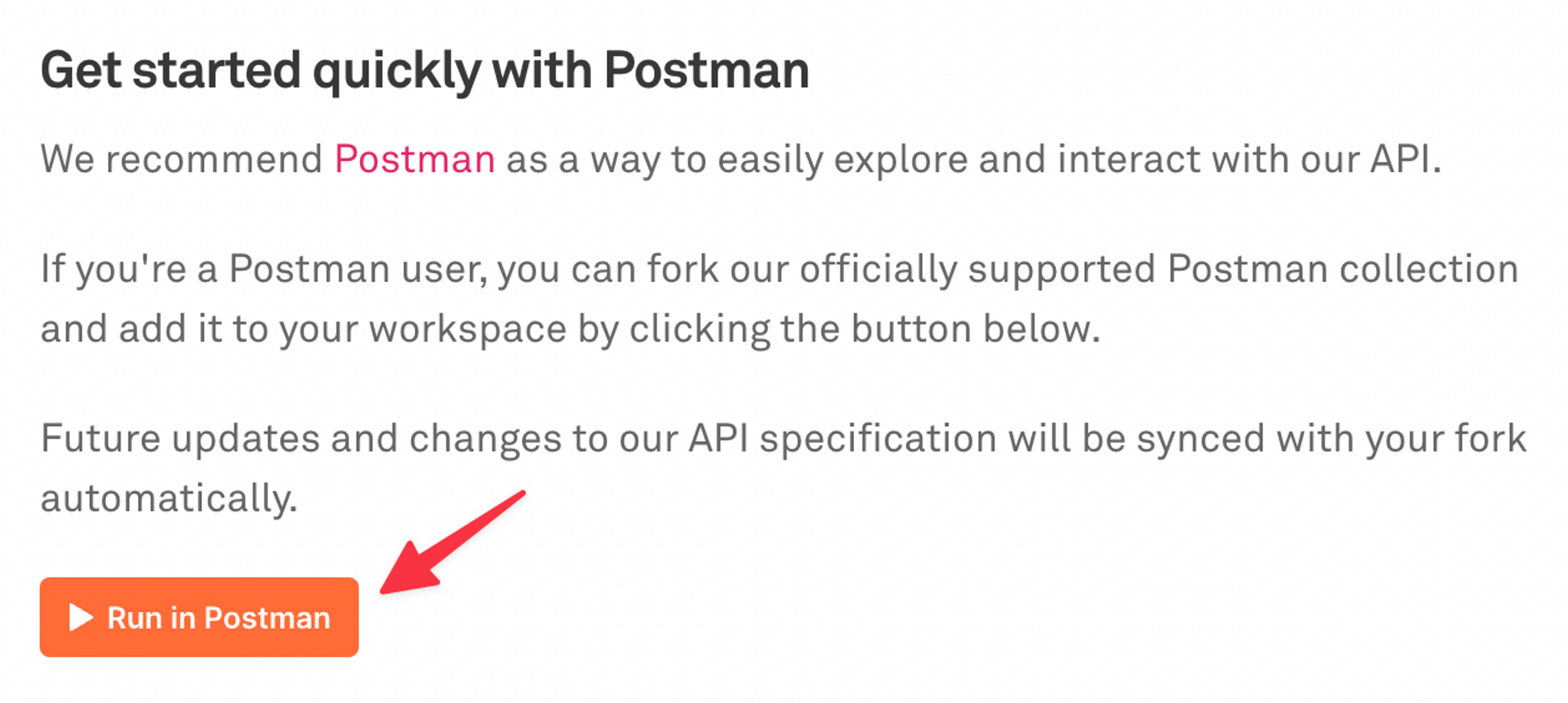
Once you click the button, a new tab will open up, prompting you to click another orange button that says “Fork collection.” Click that button.
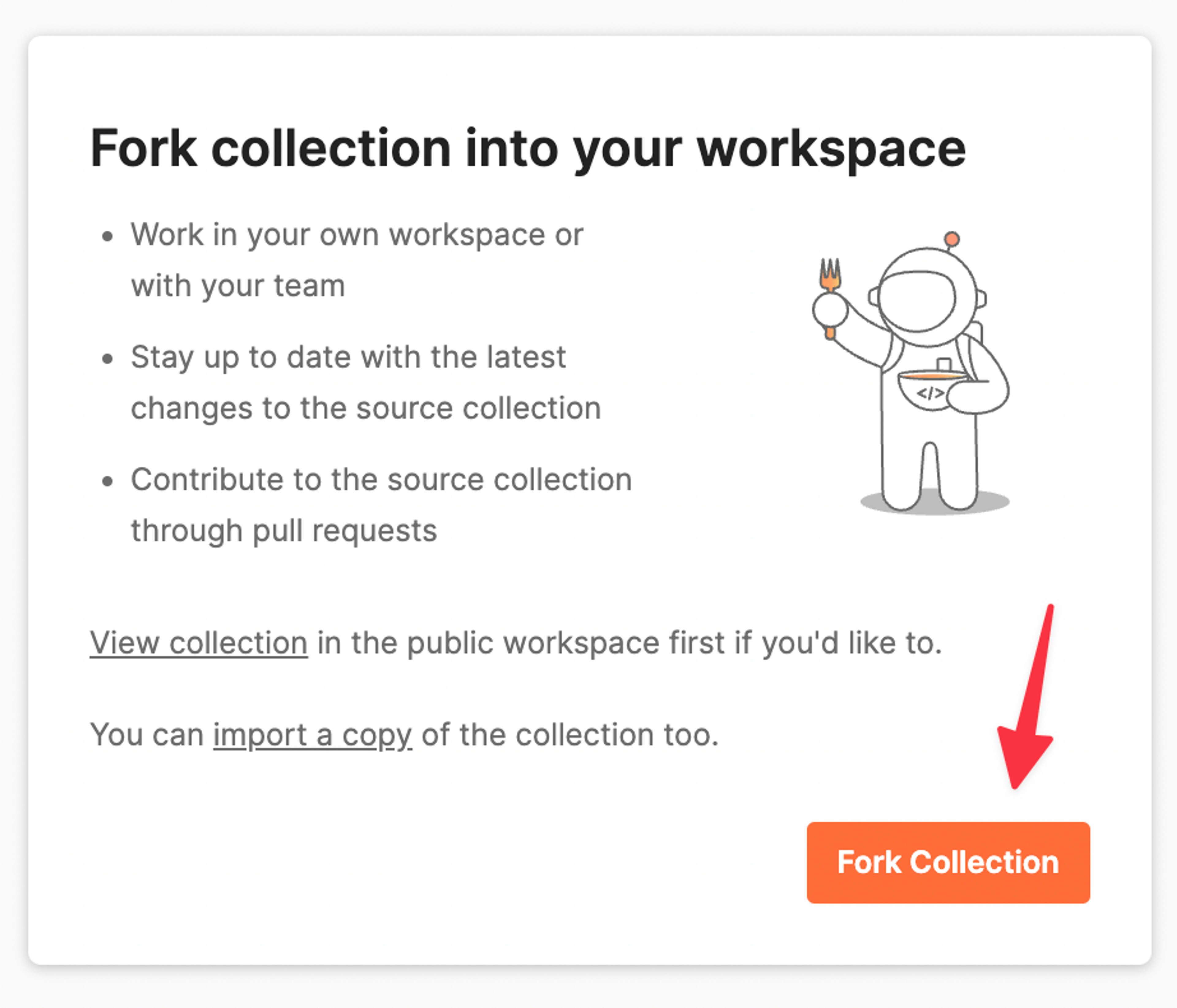
Next, Postman will prompt you to create a name for your forked collection — just something to let it know that you’re a clone and not the original. You’ll also have to select which of your existing Postman workspaces you want to copy or fork this collection into. Keep in mind that if you fork this collection into a public collection, it will technically be viewable by other people.
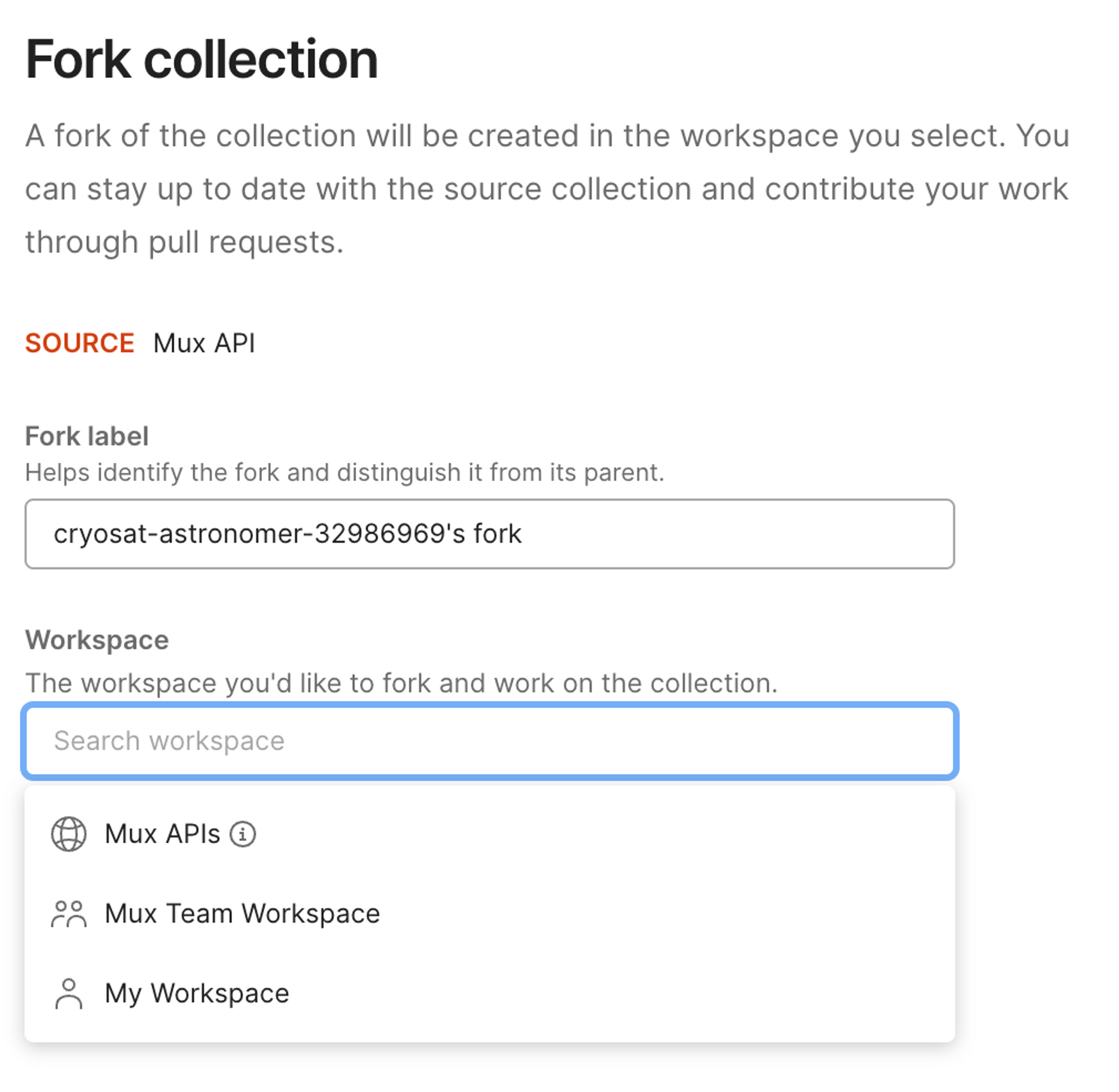
Voila! You can now easily make API requests for Mux Video or Mux Data in Postman with minimal setup. Note: You will still need to set up your personal authentication details.
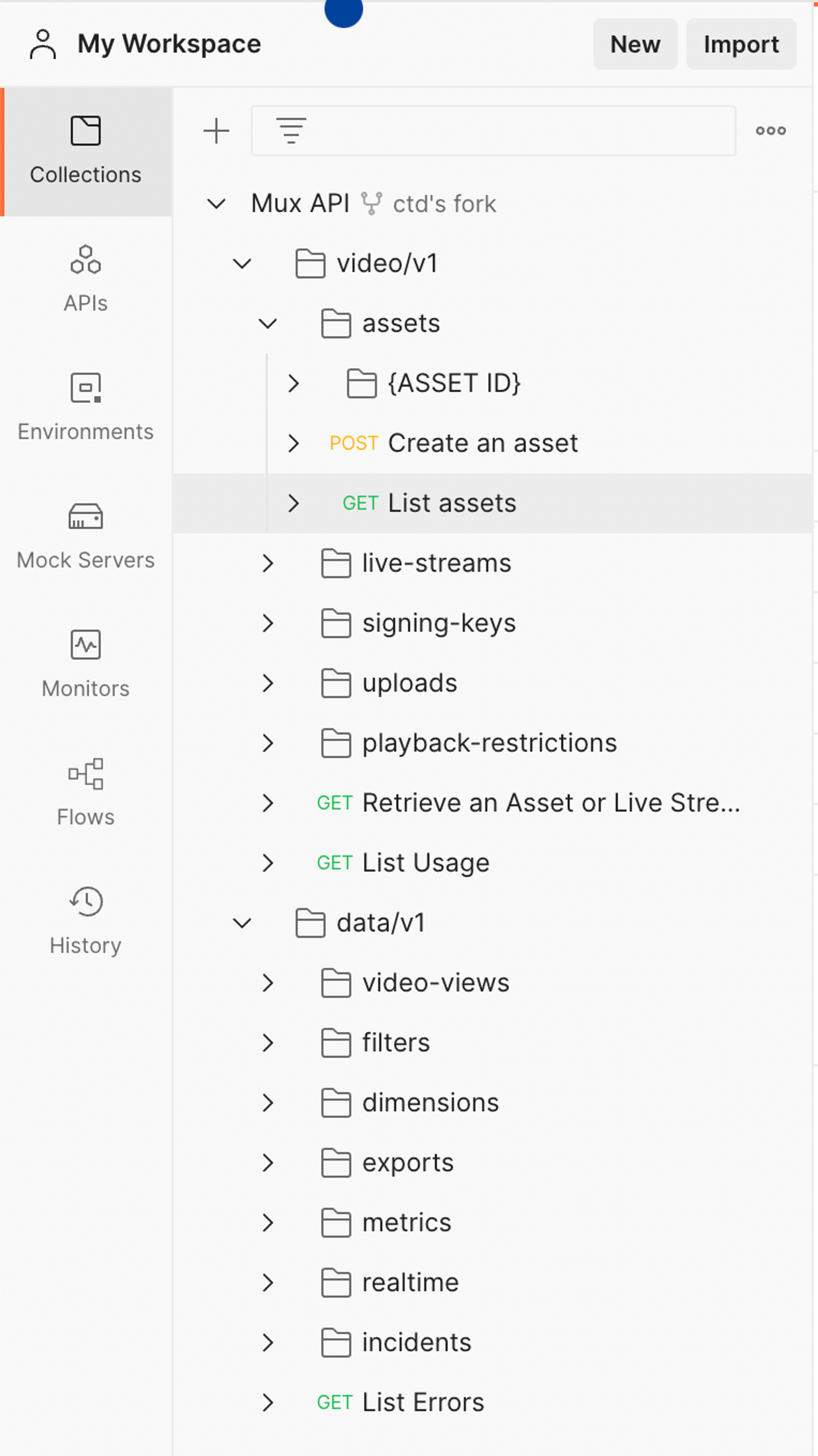
Follow up with us
We made it possible for you to fork our Postman collection and stay up to date with our API because we believe it will help you get familiar faster and interact more seamlessly with our product. We’d love to know whether this works out for you. You can let us know by leaving a comment at the bottom of the respective docs page for the Postman collection.
If you have any questions or want to chat, I’m all ears @clearlythuydoan on Twitter 💃🏻


